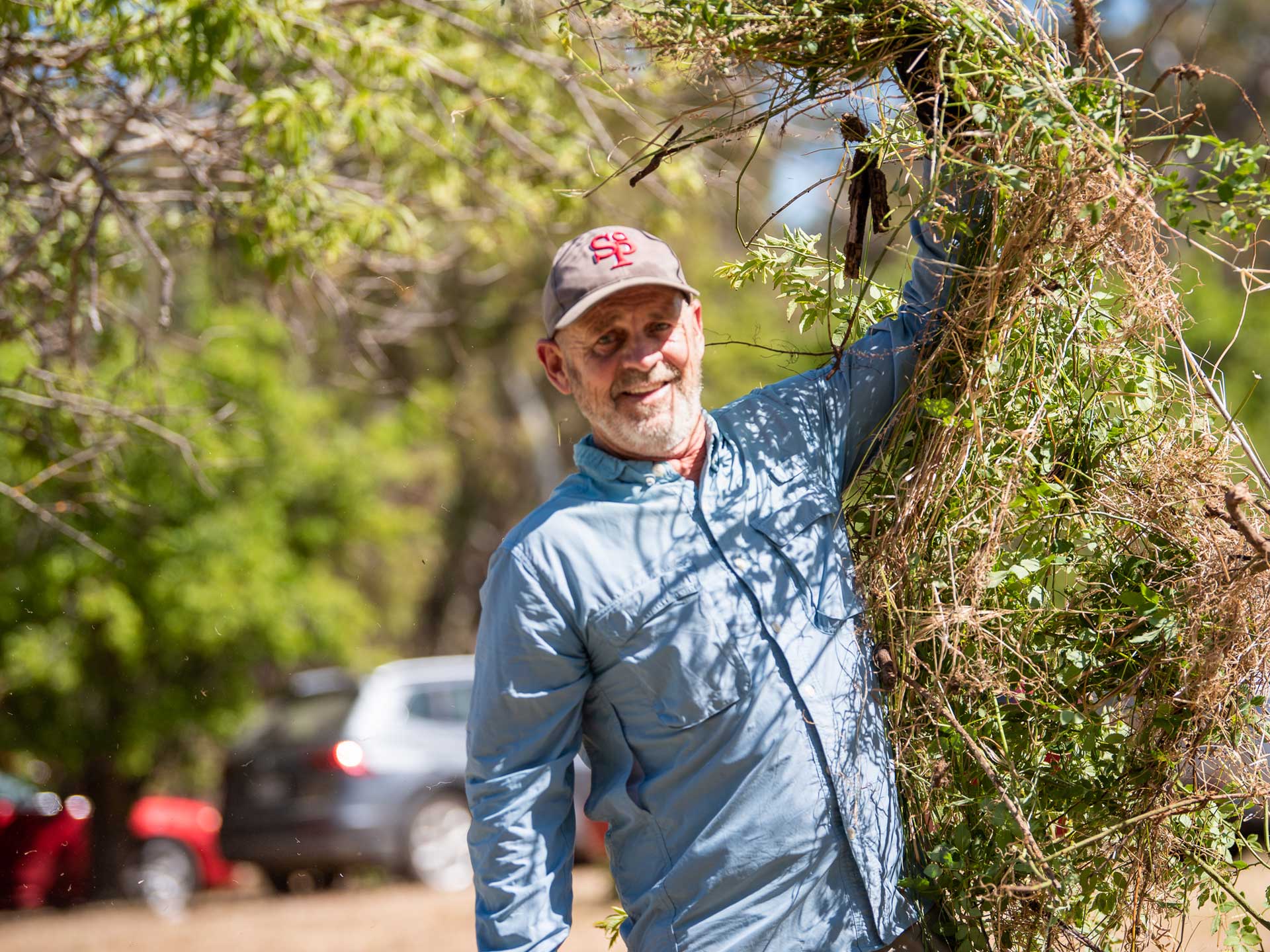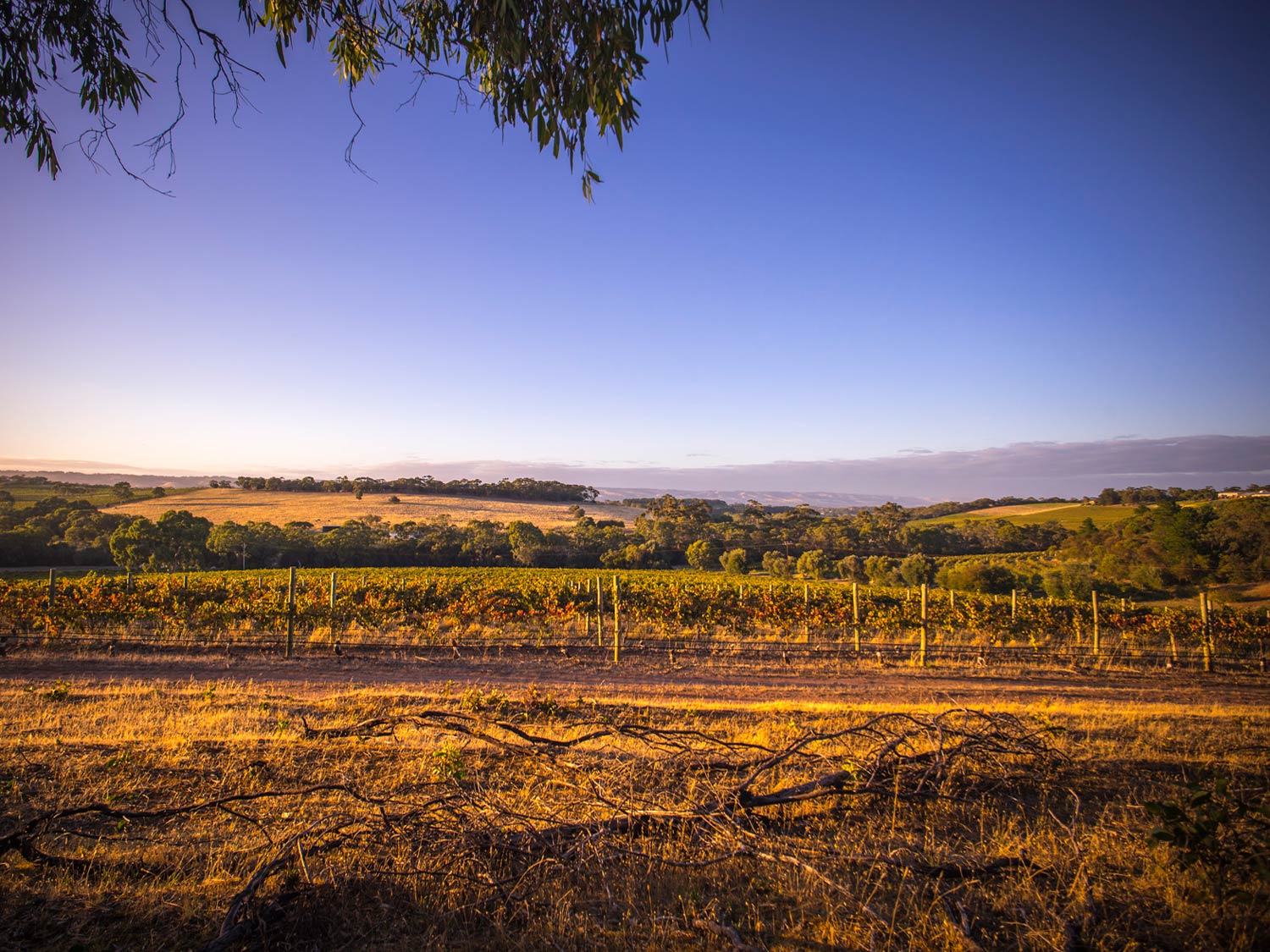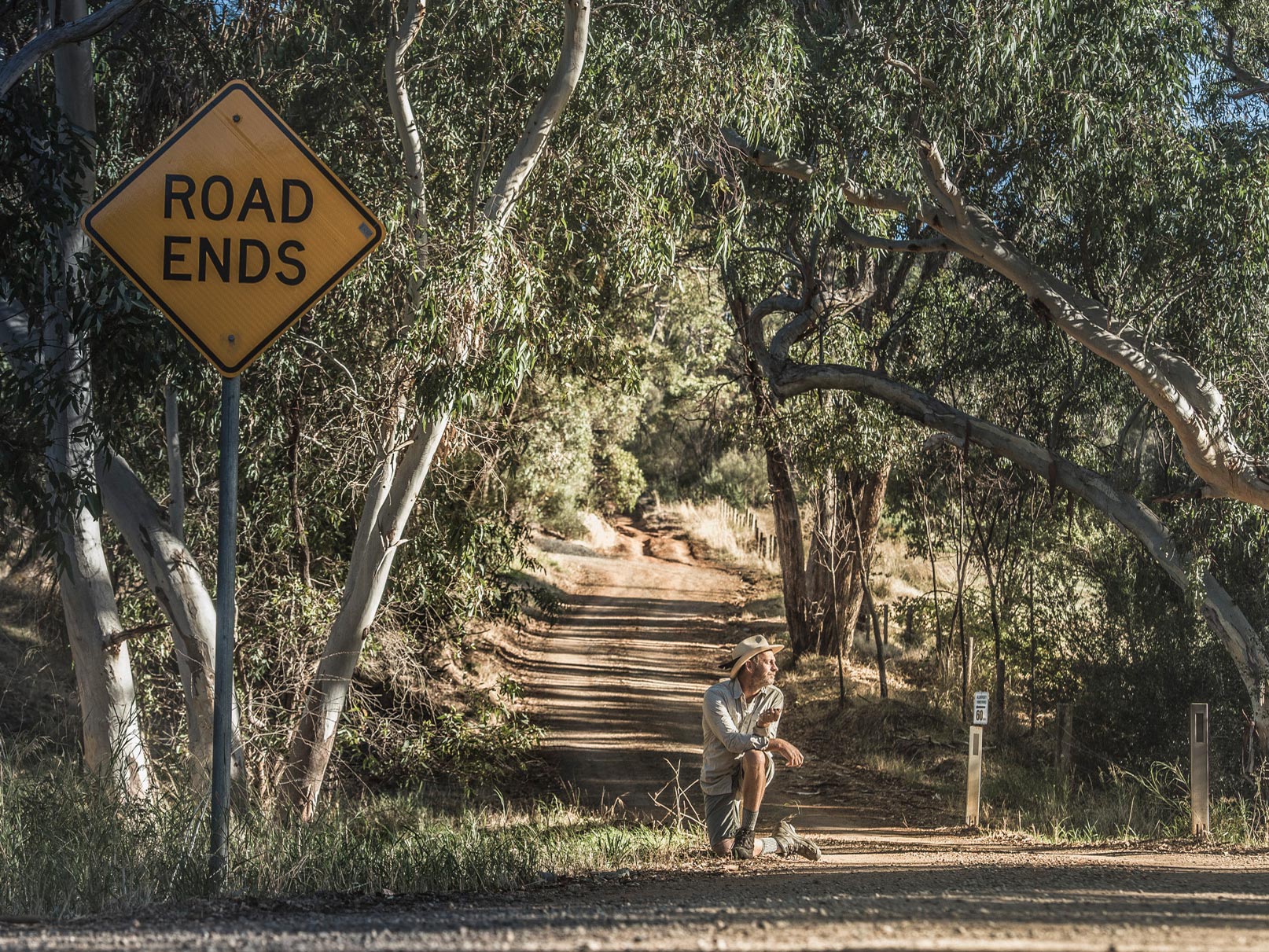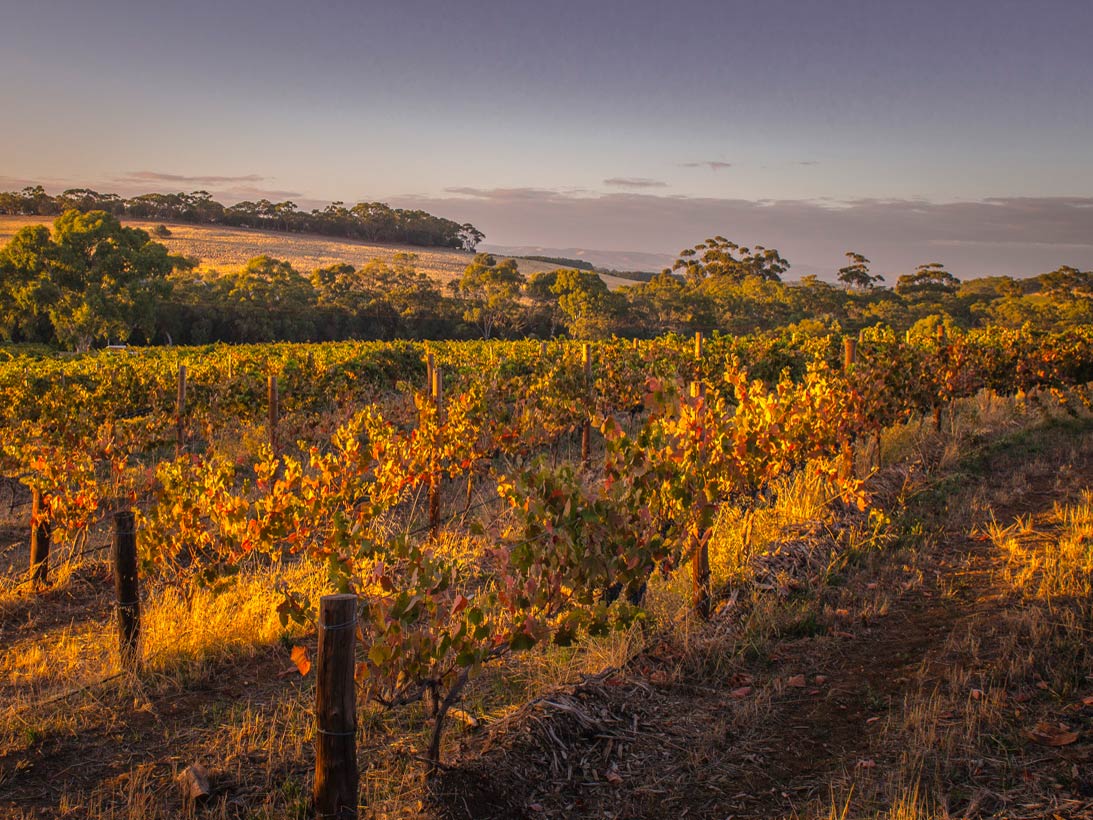Planted circa 1960s, and purchased in 2012 by Fiona and Stephen Pannell, the Koomilya vineyard combines McLaren Vale’s wine heritage with a forward thinking approach to the identity of Australian wine through the lens of ‘alternative’ climate-apt varieties. The site includes two rows of mataro that are around 100 years old, as well as some old-vine shiraz and cabernet sauvignon propagated in the 1960s from McLaren Vale’s original 1840s vines. Malbec, touriga nacional, tempranillo and grenache make up the rest of the vineyard, where the average vine age is around 25 years. Large work to replace invasive plants with native trees, coupled with further regenerative agriculture, has been taken to restore the land. The 12 hectares under vine are nestled amongst two native scrublands – preserving the endangered Grey Box Grassy Woodlands – and creek lines which define the unique setting of this 35 hectare property.
In December 1994, during his winemaking tenure at BRL Hardy, Stephen Pannell found himself captivated by the unique environment of this old vineyard. Pannell had explored hundreds of vineyards worldwide, but this site had particularly captured his heart. He shared his aspiration to acquire the vineyard with the owner should the opportunity ever present itself, with this dream turning into reality in late 2012 when Stephen and Fiona Pannell were offered the chance to take over stewardship of the 35-hectare estate. This marked the beginning of their journey to rejuvenate the patchwork of old vines woven amongst some undulating bushland.
The site called into Pannell a sense of conservation. “We have so far cleared around 800 metres of creek line from wild olive infestation, which had killed many native flora,” he says. “In place of this clearing we have planted around 5000 new plants in conjunction with local volunteer group Biodiversity McLaren Vale – with which we have been a partner for five years and counting – and will continue this project well into the future.”
“The ‘aha moment’ came when one section of densely olive infested creek line was cleared, and I felt a vacuum of air pull past me. This section sits below the touriga and mataro blocks, which before clearing used to consistently over-ripen due to trapped hot air that had nowhere to flow. Since creating this air flow by removing wild olives, we now struggle to get these varieties ripe in some years!”
“The ‘aha moment’ came when one section of densely olive infested creek line was cleared, and I felt a vacuum of air pull past me. This section sits below the touriga and mataro blocks, which before clearing used to consistently over-ripen due to trapped hot air that had nowhere to flow. Since creating this air flow by removing wild olives, we now struggle to get these varieties ripe in some years! This work is ongoing and we continue to see a cooling effect across the whole vineyard. This gave us an injection of enthusiasm that led us down the path of regeneration that we are strongly committed to today. It was an awakening to how significantly influenced the vineyard is by its environment.”
But this was a byproduct to the primary motivation of these works – the sense, care, and custodianship of the natural environment, as Pannell points out, “The vines have benefitted so much from this work, but really the restoration of biodiversity areas is most fulfilling. We have two major biodiversity areas that consist of Grey Box woodlands, which are listed as an endangered ecological community under national environmental law.”
The vineyard’s unique setting, surrounded by this rare native scrub and creek lines, forms a biodiverse backdrop that influences every aspect of viticulture. The preservation and regeneration of these areas not only enhances the vineyard’s ecosystem but also provides a natural defence against pests and diseases. “Whilst the vineyard itself is a monocrop, the vines grow in a densely biodiverse ecosystem that provides protection for the vines through – for example – the presence of beneficial arthropods and microorganisms, which can be observed in our very low incidence of pests such as scale, snails and bud mite. Furthermore, we have resident birds of prey which keep smaller bird pressure down, meaning we don’t have to use nets.”
This biological and regenerative approach to vineyard management is at the core of their philosophy, where soils, pests, water management, as well as other inputs such as tractor passes, are all interconnected. The cleared olive trees are recycled to produce biochar and mulch. In further examples, Pannell points to the ground: “Immediately following purchase in 2012, the vineyard floor was converted from ‘conventional management’ – meaning herbicide under-vine and mid-row mowing – to 100% ground cover,” he says. “Today, we do not use any systemic herbicide or fungicide. After years of sowing perennial cover crops, the vineyard floor is now a volunteer sward that is mowed two or three times per year, with only one pass of an under-vine knife, which simply severs the surface roots of grasses rather than turning the soil entirely. With younger blocks that can’t be managed mechanically, we instead apply mulch to cover the under-vine area.”
Pannell highlights some of the outcomes of this approach: “Running 100% ground cover allows us to hold more water, meaning we irrigate less, which contributes significantly to the vineyard’s sustainability given the increasing scarcity of water. Furthermore, with more available evidence for the benefits of running 100% cover, we can be confident in allowing grass to grow, and instead focus on the timing rather than frequency of our interventions. In summary, more ground cover means less passes and less diesel and less labour hours, which means more environmental and economical sustainability!”
Pannell is resolute about wines communicating a sense of place. “Koomilya has allowed us to explore this deeper than in any other vineyard, due to its unique setting and vine material,” he says.
McLaren Vale has many subregions that producers reference, such as Blewitt Springs, McLaren Flat, Seaview, Sellicks and Willunga. The established subregions are both distinct from each other and far from homogenous within themselves. “In contrast to the sandy soils of true Blewitt Springs, Koomilya possesses older – 650 million years plus, more compact, iron-rich clay soils, with silty loam pockets, and limestone at depth. Generally, these structured soils produce structured wines, but combined with a southerly aspect and significant cooling effect of the surrounding scrub, we also see bright and savoury aromatic profiles in the wines.”
“Combined with the vineyard’s unique setting, we have pre-clonal material in much of the vineyard, which contributes to the unique character of our fruit and resulting wines. This includes old-vine Shiraz material, as well as Reynella Selection for Cabernet Sauvignon material, which can both be traced back to the original 1840s McLaren Vale plantings of both varieties.”
“All vineyard decisions are formed around the desire to produce fruit that reflects the site and season. The aim has always been to achieve ripe tannins and fruit characters at lower potential alcohols. In the winery we mature the wines in large, neutral oak which preserves the character of the fruit alone. These wines have strength, intensity, and glorious grape tannins, which wind the palate together.” It’s this focus on tannin that has led much of the decision making at Koomilya. In the first five years of owning Koomilya, only two wines were released – a reflection of Pannell’s standards. “We now see four single block wines produced nearly every year, with two or three blends made each year depending on the vintage.”
While South Australia is blessed with some of the world’s oldest vines – notably, shiraz, cabernet sauvignon and grenache – as a winemaker, Pannell has for some time championed an idea of finding a truly unique Australian character in wine through unique blends that particularly include a mixture of origins. Whereas Australian wine was established on French classics, Pannell has looked to a collection of warm Iberian and Mediterranean regions for inspiration, such as Greece, Portugal and southern Italy. “I believe warm climate varieties that require minimal irrigation and ripen evenly with balanced acidity and moderate alcohol levels are best suited to McLaren Vale overall. These include grenache, mataro, aglianico, nero d’avola, xinomavro, fiano, piquepoul, and assyrtiko. Such varieties all have the capability to produce wines with warmer climate charm while maintaining freshness,” he says.
It’s this thinking that has led Pannell to introduce tempranillo, malbec, and touriga nacional to the site since 2012, with current bottlings including the likes of ‘Tempranillo Touriga’ joining the multiple expressions of single varietal Shiraz and Cabernet Sauvignon bottlings.
“It is a multi-decade project, but a legacy that will last centuries. In the vineyard, I would like to see the near-century-old blocks continue to mature and flourish and observe the characters of the resultant wines evolve or cement themselves over decades of vintages.”






